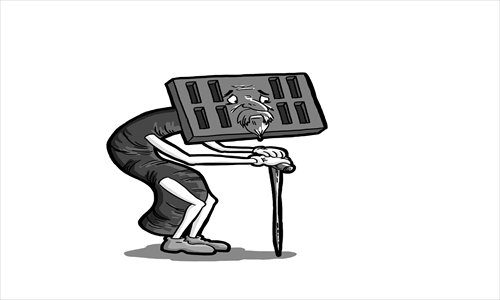Victorian sewers put China to shame

Following the disastrous flooding in Beijing on July 21, a Chinese netizen uploaded pictures of the sewers in the nearby city of Qingdao, which had coped with the impact of the storm much better than Beijing.
The difference, as commentators pointed out, was that the Qingdao sewer system had originally been built a century ago by German engineers, back in the city's colonial days.
Accordingly, as the pictures showed, the sewer is big enough to drive two double-decker buses through, side by side.
Such images aren't unusual for anyone who's studied 19th century engineering, however. The Victorians prided themselves on the quality of their drainage.
In part, that was a reaction to the appalling conditions that had marked 18th century cities. London's streets would flood with such regularity that there were men who made a speciality of carrying people over them for pay, a tradition resurrected last summer in Shanghai, where enterprising locals charged 2 yuan ($0.31) apiece to lift stranded pedestrians on their handcart across drowned roads.
The early Victorians were righteously angry about the miserable state of their drains. "There are hundreds, I may say thousands, of houses in the metropolis which have no drainage whatever, and the greater part of them having stinking overflowing cesspools. And there are also hundreds of streets, courts and alleys that have no sewers; and how the drainage and filth is conveyed away, and how the poor miserable inhabitants live in such places it is hard to tell," wrote one surveyor in 1847.
Drainage became a potent symbol of the modern. This was given extra impetus when cholera was discovered to be attributable to bacteria in stagnant water in 1854, after which engineers accepted the life-saving challenge of cleaning up cities' water supplies with extra zest.
Across Europe, sewers became a source of national pride. The French began running tours of the Parisian sewer system in 1858, and French novelist and reformer Victor Hugo dedicated over a hundred pages of his magnum opus Les Miserables to describing the sewers in detail, perhaps also motivated by being paid by the word.
Both London and Paris still run tours of their sewers today, and the systems built over a century and a half ago remain a core part of the infrastructure of the modern cities.
One reason these tours are worth going on is that they also represented a general Victorian pride in craftsmanship.
Tourism was never envisaged as part of the sewers' purpose, but nevertheless the engineers built structures, far underground where only sewer workers were ever expected to see them, that were beautiful as well as functional. London's drainage stations resemble miniature cathedrals, crafted to display all the skill and modernity of the time.
All of this makes a sharp contrast with China's current situation. Sewers have never been high on the agenda in an age of glittering skyscrapers and vanity projects. It's rare for pictures to be published showing local leaders on inspection tours of drainage canals. What's underground is out of mind, until its failures come to light with deadly effect.
As economist Lu Ting commented to the Los Angeles Times, "Local cadres are hard-wired to generate visible economic growth such as industrial parks and highways because so much of their political advancement relies on showcase achievements." Sewers don't produce short-term returns, making them unattractive for many local officials.
But the lack of glamour is only one reason China's drainage is so poor. Rushed construction and an absence of basic skills have meant that everyday roads, highways, and compounds are so shoddily built that they flood as easily as London's Georgian streets once did. Where the Victorians once had the patience and pride to build structures that were both elegant and functional, Chinese builders care only about getting the job done as cheaply and quickly as possible.
As Hugo wrote, "The sewer is the conscience of the city [...] There, no more false appearances, no plastering over is possible, filth removes its shirt, absolute denudation puts to the rout all illusions and mirages, there is nothing more except what really exists, presenting the sinister form of that which is coming to an end." Chinese cities cannot afford such illusions anymore.
The author is a copy editor with the Global Times. opinion@globaltimes.com.cn